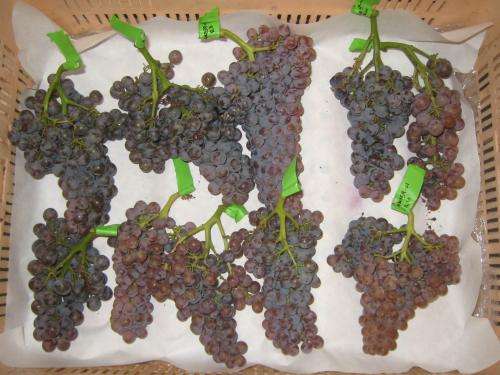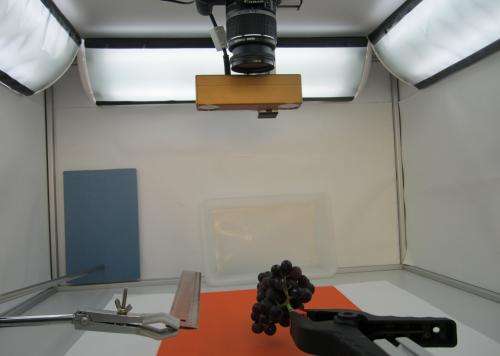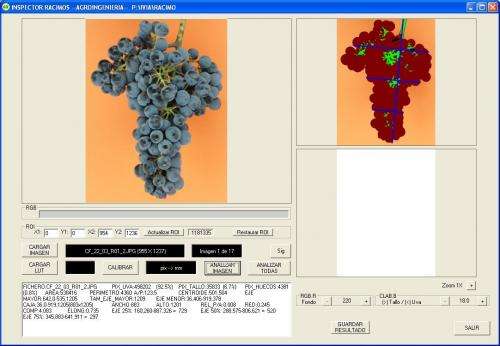Noninvasively estimating the compactness of grape bunches in vineyards

Researchers have developed a new computer vision system that helps to determine the compactness of bunches of grapes, a characteristic that strongly influences the quality of the grape and the wine. Their results have been published in the Australian Journal of Grape and Wine Research, the most prestigious scientific journal in the world in the area of viticulture.
The compactness of bunches is a key characteristic that can significantly influence the quality of the grape and the wine. Currently, to evaluate this, bunches must be inspected visually by trained assessors, based on a method established by the International Organisation of Vine and Wine (OIV). "This method offers subjective and qualitative values, while our method, based on image analysis, provides information on the compactness of the bunches in a non-invasive, objective and quantitative manner," says Nuria Aleixos, of the Institute for Research and Innovation in Bioengineering (i3BH) of the UPV.
The system developed by the researchers from Valencian and La Rioja helps to provide information on the characteristics of the bunches of grapes on the vine, using data from the automated processing of images and the multivariate analysis of the morphological properties and colour. Among other values, it offers information on the visibility of the pedicels, the presence of berries deformed by pressure and any special relationships between their geometric characteristics.
The unit incorporates a photographic camera, a lighting system with four points of light and different algorithms for image acquisition and processing. Regarding its application, it could be used in the automated inspection of the bunches in the field, as well as upon entry to the winery to separate bunches with different characteristics.

Validation
To obtain a reference for the compactness, 14 experiments characterised this property in 90 bunches of nine very different varieties of black grapes with the visual classifications from 1 to 9 recommended by the OIV. The least compact bunches are classed as 1 and the most compact as 9. The final classification for each bunch was the average of the 14 scores. This data was compared to that obtained by the computer vision system and the multivariate analysis, obtaining compactness prediction capabilities greater than 85% for all the varieties analysed.
"It must be taken into account that the visual method is subjective and, therefore, imprecise in itself, which gives our system added value. The results obtained from its application confirm that the combination of image technology with multivariate analysis offers a reliable alternative for quickly and objectively measuring the compactness of bunches of grapes, using for this purpose combinations of characteristics that the traditional systems based on visual evaluation by an expert cannot determine," added the researcher Nuria Aleixos.
This project was funded by the INIA (National Institute for Agronomic Research), ERDF and the Ministry of Economic Affairs and Competitiveness.

Regarding the compactness of the bunches
The compactness of bunches is a key characteristic that can greatly influence the quality of the grape and the wine. According to the criteria of the International Organisation of Vine and Wine (OIV), the bunches can be classified in terms of compactness from very lax to very dense, where the berries are very closely packed, even deformed, and where a large number of them are in interior layers.
"In the densest bunches, the air circulation is scarce and there is little exposure to the sun. This compromises ripening –it makes it more heterogeneous within the bunch- and favours the emergence of fungal diseases that will affect the properties of the wine. Therefore, the producers try to obtain lax bunches, considered of greater quality," the researchers write.
More information: S. Cubero, M.P. Diago, J. Blasco, J. Tardaguila, J.M. Prats-Montalbán, J. Ibáñez, J. Tello and N. Aleixos. "A new method for assessment of bunch compactness using automated image analysis." Australian Journal of Grape and Wine Research. DOI: 10.1111/ajgw.12118
Provided by Asociacion RUVID




















